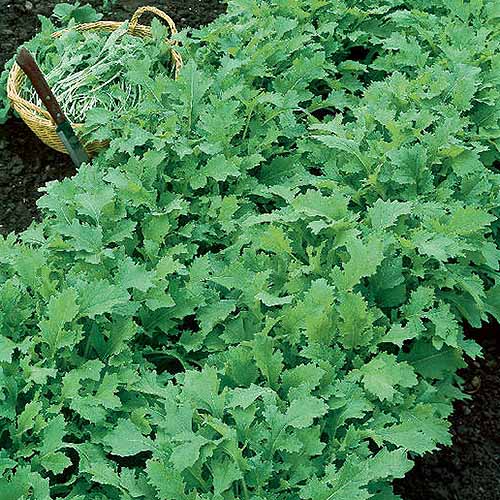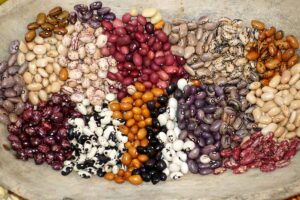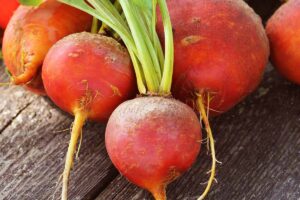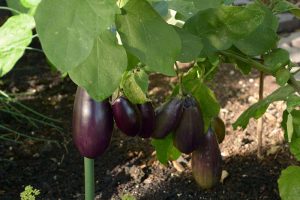Like their cousins collard and mustard, turnip greens are perhaps best known for appearing alongside some type of fatty pork.
While the pork brings the flavor to the party, turnip leaves bring a nutritional punch.
With few calories and many vitamins, these leaves should be on your short list of veggies to grow in your garden!
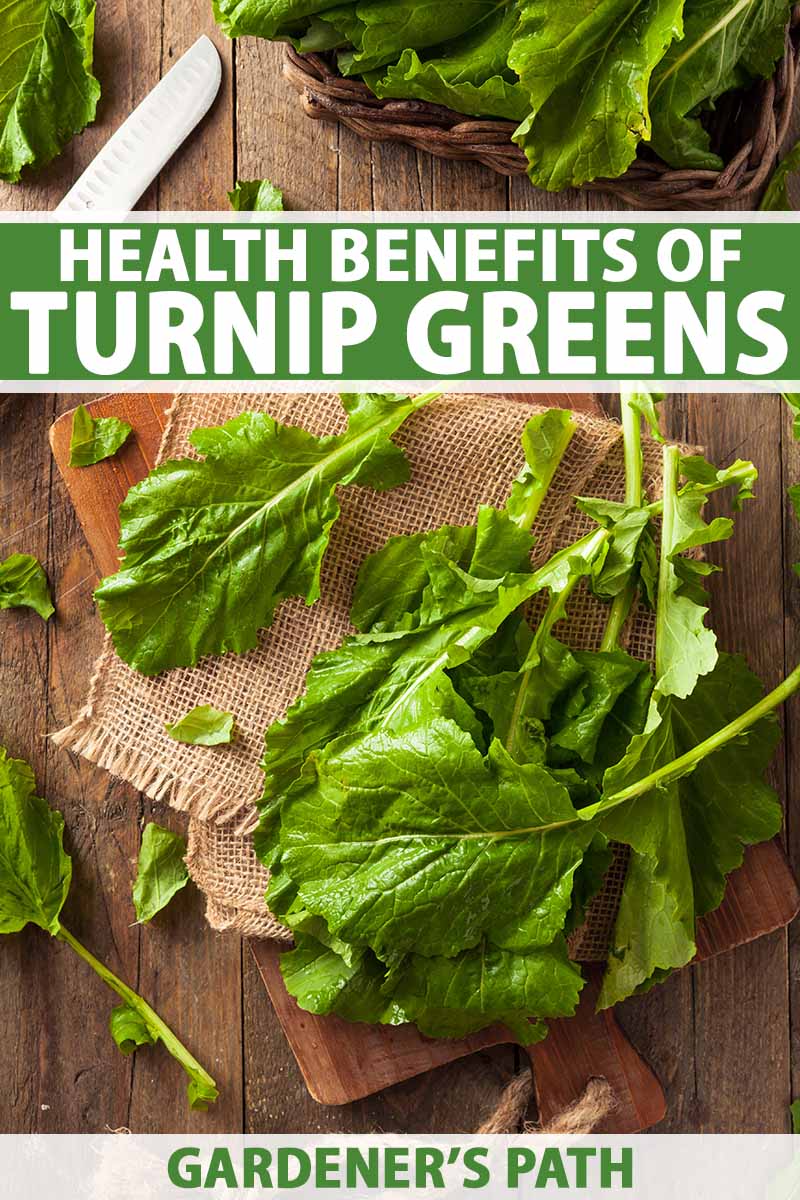
We link to vendors to help you find relevant products. If you buy from one of our links, we may earn a commission.
Let’s dig into the health benefits.
What You’ll Learn
What Are Turnip Greens?
Turnips are a root vegetable that grows well in most temperate climates.

The bulbous root of the turnip is what typically comes to mind when considering this vegetable, but the leafy tops are also edible and nutritious.
And you don’t want to let them go to waste!
The leaves can be saved when you’re thinning your plants early in the season when they’re small, and you can harvest several times a season after that without hurting root development, as long as you don’t pluck all of them.
When your tasty turnips are finally ready for harvest, this is your opportunity to enjoy all of the fully mature leaves that remain, in a soup, salad, or saute.
At the grocery store or farmers market, you’ll also often find turnips that still have the leaves attached for your culinary enjoyment – two vegetables in one!
Otherwise, you can sometimes find the tops sold on their own, or in bagged mixes with other types of leafy vegetables.
Which cultivar should you select to grow in your own garden? If you’re interested in the tasty roots as well as the tops, try this ‘Purple Top’ variety.
Seeds are available from Eden Brothers.
If the leaves are more your thing, ‘Seven Top’ may be a better choice. This cultivar doesn’t develop bulky edible roots, but instead focuses its energy on growing beautiful, nutritious leaves.
Pick up a packet of seeds now, also from Eden Brothers.
Our guide to growing turnips provides all the details you need to select the best varieties for your garden, plus tips for a great harvest!
Nutritional Value
These leafy veggies can be eaten cooked or raw. Cooking them, especially with a little bit of bacon, helps to reduce some of their bitterness.
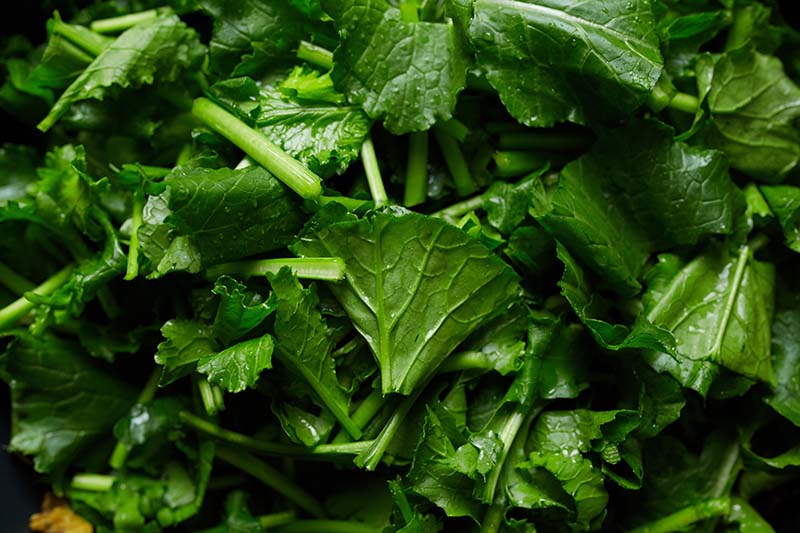
One cup of cooked turnip greens, without any added salt or oil, comes in at a measly 29 calories.
It provides 5 grams of fiber, 197 milligrams of calcium (18% of the recommended daily value for healthy adults), 1.15 milligrams of iron (14% DV), 292 milligrams of potassium (62% DV), 170 micrograms of folate (53% DV), 549 micrograms of vitamin A (69% DV), and 526 micrograms of vitamin K – 5 times the recommended daily value!
Plus, if you do go the bacon route, cooking the leaves in a little bit of fat actually helps our bodies to absorb the fat-soluble vitamins, A and K.
Raw turnip leaves come in at only 17 calories per cup, since they are more loosely packed and have less volume.
Raw, they offer more vitamin C and B6 than when they are cooked. Remember that certain nutrients are broken down during cooking, while others, like vitamin A, may be enhanced.
Eating a variety of raw and cooked veggies every day is incredibly important for a balanced diet.
Potential Health Benefits
All of these nutrients mean mega health benefits! Potentially, at least. Adding turnip greens to your diet may help to improve your health.

Let’s break these down.
First up is fiber. I’ve said it before and I’ll say it again: fiber is your friend!
With 5 grams provided per serving, one cup of greens fulfills about 25% of the recommended daily intake of dietary fiber.
This helps to promote regular digestion, and feeds and diversifies the helpful bacteria in your gut. Gut microbiome diversity can help to support your immune system.
Calcium is known for supporting strong bones and teeth, but it’s also present in small amounts in the blood, and plays a role in metabolic functions.
To help bones retain their calcium, sufficient vitamin D is needed as well.
Turnip greens do not provide this vitamin in significant amounts, so you will need to get it from other food sources, or from daily sun exposure (with sunscreen for protection, of course!).
They can help to support your red blood cells by providing a good source of iron. So, what qualifies as a good source?
That would be 10-19% of your DV, and this qualifies! Because they also contain some vitamin C, this will help the iron to be more bioavailable, and better absorbed in your body.
This is important to note because plant-based iron is not as easily absorbed as animal-based heme iron.
Improved eyesight may come along with an intake of these vegetables. Vitamin A plays a critical part in maintaining our retinas, which allow us to see.
Turnip greens can also help to lower cholesterol, due to the phytosterols that they contain. Phytosterols are a type of phytonutrient in plants that have been shown to lower LDL (aka “bad”) cholesterol.
Turn Up the Turnip
With the ability to potentially contribute to lower cholesterol, support red blood cells, and improve digestive health, adding turnip greens to your diet is practically a no-brainer.
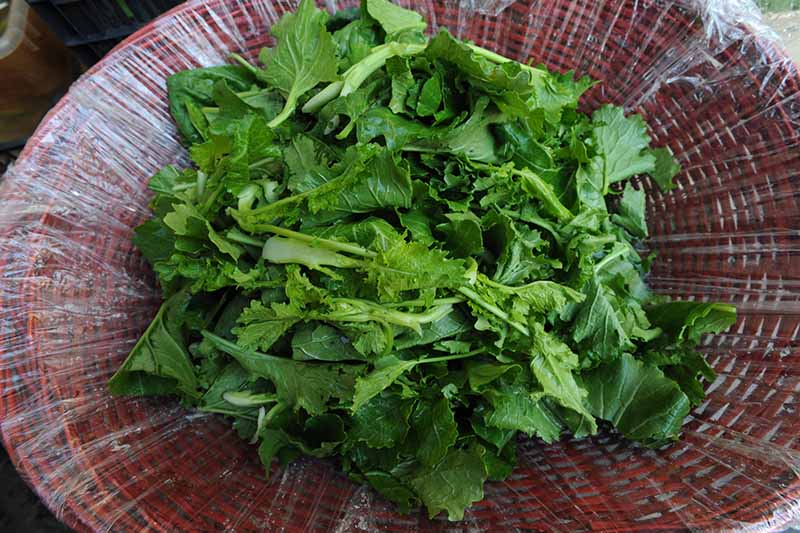
The ability to use the roots and the leaves in cooking makes them an economical veggie choice as well, in terms of cost at the grocery store, as well as commitment of time and resources in the garden!
Drop a comment below to let me know your favorite way to use turnip greens in your cooking.
And if you’re interested in more vegetable content with a focus on healthy greens, these articles will send you in the right direction:


